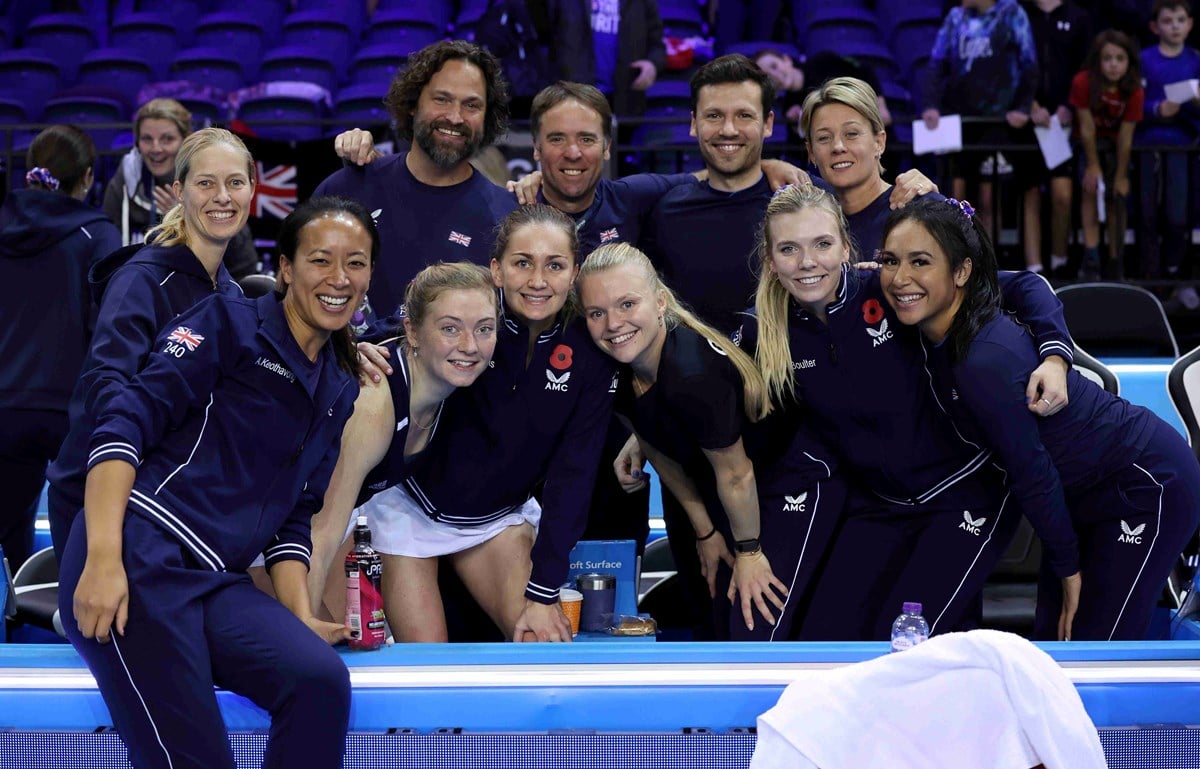How performance analysis is helping British players reach the next level

Performance analysis is an ever-growing discipline in the sporting industry that provides athletes and coaches with information that helps them understand performance. We’ve all heard about the countless hours of preparation that go into every match and the minefield of stats available to the team, but how do these contribute to results on the court?
Toby West is a Performance Analyst and has been working in the women’s program at the LTA for the last four years. As part of a new series speaking to the people behind-the-scenes in British tennis, we sat down with Toby to gain an insight into his pathway to becoming a performance analyst, what his role consists of and how much of an impact performance analysis will have on the future of tennis and the wider sports industry.
“I was up in Edinburgh at the time studying sports science and I was a rugby player as well,” said West. “I got in contact with Scottish Rugby and got an internship with them and worked my way up as a performance analyst.
“After that, I went across to Glasgow Warriors and led the analysis there for a couple of years and then wanted a bit of a change from rugby. The skills that we use in performance analysis are very transferable, so I interviewed for the job here (at the LTA).”
While performance analysis has been active in the sports industry in some capacity for a long time, the substantial impact it’s had on transforming competitive sports appears to somewhat fall under the radar, with many people not understanding it’s immense influence on tennis players competing at the highest levels.
“Essentially, we provide data - numbers, statistics and video feedback on players performances as well as opposition performances to help our players hit their targets and goals,” West explained.
“For tournament support, we help them get through each round by not only analysing their own performances from the previous rounds, but also looking at their opponents’ strengths and weaknesses, so we can pick out the key areas that we can gain an advantage on.
“We've got a platform and all the players and coaches are signed up to that. That's where we upload all our footage, data, and reports. Our reports are eight to 10 pages long, but it’s important for us as analysts to not only produce the data but to analyse and provide a concise summary for them.”
In-depth performance analysis has become an important aspect at the top-level for not only tennis, but football, rugby, hockey, and basketball as well – but why is it so important for the modern-day game?
“It’s because everything is improving – whether that be training, the conditions, the equipment you’re using or the fact more people are playing these sports and to a higher standard as well. Any advantage you can get is a significant one and that’s what analysis provides. It won’t be the be all or end all for winning or losing a match, but at the top you know that one or two percent can make a difference.”

Toby was the analyst working at the Billie Jean King Cup Finals in Glasgow back in November 2022, and more recently provided analysis for the Australian Open, where eight female British players featured across the qualifying and main draws. With such a quick turnaround for matches and a large field of players, extensive preparation is key to analysis in the bigger tournaments.
“When the draw comes out and we find out who our players are playing, we’ll immediately start some analysis on that, whether that be the actual opponent or one similar. We’ll analyse the matches of the opponents and pull together a short report saying here are their strengths and weaknesses and this is what you might want to target or look out for.
“For example, we’ll be looking at patterns of play in general - where the opponents serve, where the most effective serves are in key situations and looking at their return positions and directions. From there we can help determine whether a player wants to return to their forehand or backhand and target their weakest areas.”
With performance analysis in tennis providing fantastic career opportunities, we asked Toby what the standout highlight is for him working in this role.
“I mean, it's always great to work with these players. You are around athletes that are at the top of their game, and you do take that for granted to a certain extent. It's brilliant to know that you are in a small way of contributing to that performance when they step out on court.”

Despite performance analysis already being an established discipline, it’s use and functionality will undoubtably develop and grow as technology in professional tennis advances, but what is the future of future of performance analysis expected to look like in our sport?
“It will certainly continue to grow, at least I hope so! It’s looking like it’ll move to be a lot more automated. For example, with Hawkeye, you can now get a lot of data from there, so in the future most, if not all tennis matches, will be analysed with stuff like Hawkeye, instead of having people sit there and manually tag matches for us.
“It’s getting bigger within the sport for sure, even since I’ve been here (at the LTA) the analysis has come on a lot and I can only see it getting bigger.”
